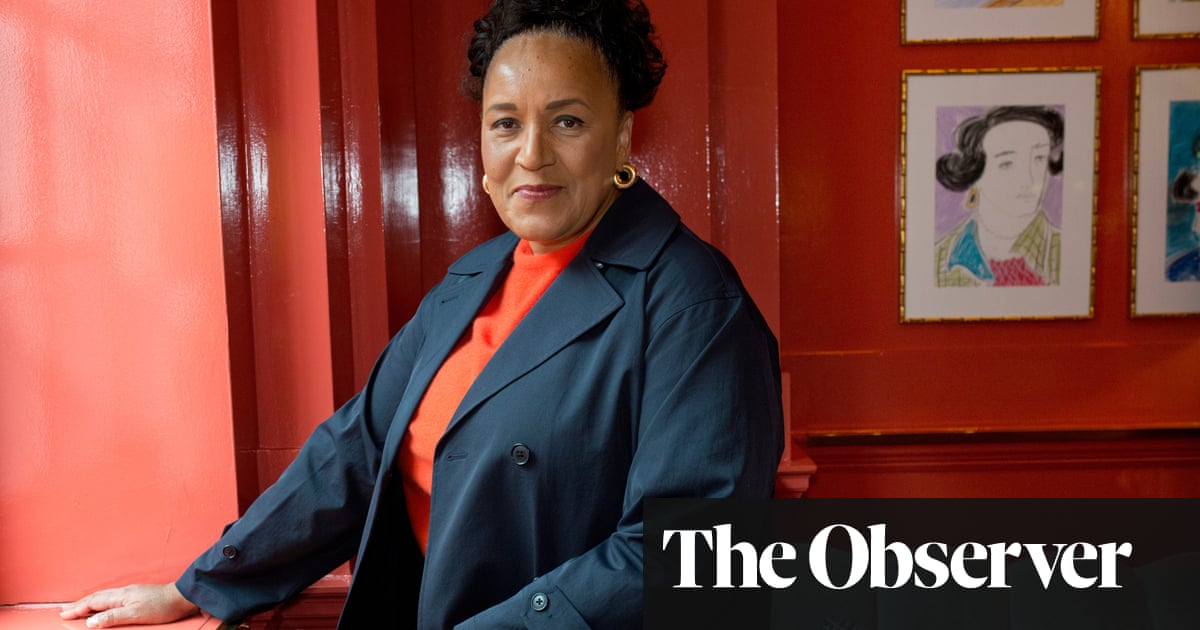
hen the Scottish-Ghanaian architect Lesley Lokko was appointed to head the architecture school at the City college of New York last year, her arrival was hailed as bringing “renewed energy and an exciting new vision” to the school. But after less than a year in the post, Lokko has resigned, citing a “crippling workload and lack of respect and empathy for black women”.
She became the dean of the Bernard and Anne Spitzer school of architecture in December 2019, after five years running the graduate school of architecture at the University of Johannesburg, the first such postgraduate school of architecture in Africa, which she founded in 2015. With 25 years of teaching experience across the UK, US and Africa, Lokko is widely regarded as one of the most progressive voices in architectural education. But the obstacles that she encountered in New York were unlike anything she had come up against before.
“It was a textbook ‘problem woman of colour’ scenario,” says Lokko, 56, speaking from Edinburgh where she has temporarily relocated. “The black woman arrives in an organisation and everyone is so enthusiastic. It’s treated like the coming of the second messiah. Then she begins to question the organisation and hold people accountable for their actions, and soon she’s targeted and made out to be the problem.”
Administrative issues were compounded by the coronavirus pandemic and further demands in response to the Black Lives Matter protests. “There is a deeply embedded idea in America of the figure of the caring black female who will simply pick up all the work,” she says. After the murder of George Floyd, she says, she was immediately expected to advise on the school’s public statements, on top of demands “to speak, provide leadership, comfort and sustenance.” Having also contracted Covid-19, the workload became too much to bear. “No job is worth one’s life and at times I genuinely feared for my own,” she said in her resignation statement. “Race is never far from the surface of any situation in the US,” she added. “Having come directly from South Africa, I wasn’t prepared for the way it manifests in the US and quite simply, I lacked the tools to both process and deflect it.”
Lokko is one of a small number of black people working in university architecture faculties across the US. According to the Black in Architecture report published by the Association of Collegiate Schools of Architecture in August, only 4% of architecture deans identify as black or African American, while black people make up just 5% of full-time faculty.
In response to Lokko’s comments, the City college of New York said: “The college has, for more than 173 years, worked to take on these extremely difficult questions with honesty and commitment. We will use the remainder of Dean Lokko’s tenure on campus to engage with her on the issues she’s raised and continue that work as part of our commitment to making our campus everything it should be.”
Born in Dundee, Scotland, to a Ghanaian surgeon father and a Scottish Jewish mother, Lokko grew up in Accra, Ghana, until the age of 17, when she was sent to Malvern boarding school in England. She read Hebrew and Arabic at the University of Oxford but dropped out to spend five years in the US, where she studied sociology and law before settling on architecture. She graduated from the Bartlett school of architecture in London before moving back to Ghana in 2000, where she wrote several bestselling novels, and completed a PhD by practise on building her own house. An invitation to be an external examiner for a master’s programme at the University of Johannesburg brought her back into architectural education, and she became an associate professor in 2014.
“In South Africa I used to have very interesting conversations with the vice-chancellor of the university about why there are not more African academics in architecture,” she says. “I said that it was not our job to go out and find them; it was our job to make them. It’s a project that takes two generations.”
When she was hired, the architecture programme had 11 students, all white. Widespread student protests the following year provided the impetus for radical change. “Things transformed the minute that black students in South Africa understood that their experience brought something to the creative table,” she says. “It’s a bit like talking about the contribution of African Americans to music. The specific trauma of their history found a creative outlet and it enriched the musical canon. And this is what will enrich the architectural canon, too, if only it’s allowed to. But the current approach is to burden black students with all the responsibility, and castrate them by not giving them the tools to do it. That’s a fairly racist paradigm.”
Lokko thinks attitudes haven’t really changed since her first experience of teaching in the US 20 years ago, at Iowa State University and the University of Illinois in Chicago, when she says she was “brought in on a diversity ticket”. “There’s lots of talk of bringing in more black faculty or more black students,” she says. “But the deep work is in changing the subject matter and fundamentally altering the curriculum. If you don’t provide an outlet for people to transform their anger into something creative, then no amount of regulation is going to solve the issue.”
She senses that the future of architecture isn’t going to come from the historic centres of excellence. “I somehow don’t think that change is going to come from the west or the north,” she says. “I’ve been talking about this for a decade, but my plan now is to return to Accra and set up an independent school of architecture there, which will embrace all aspects of the built environment and go beyond just teaching.” She says the ball is already rolling, with the aim is to have it open by 2023. “As bruising as my New York experience has been personally, at another level it’s a great opportunity. It’s finally time to put my money where my mouth is.”












